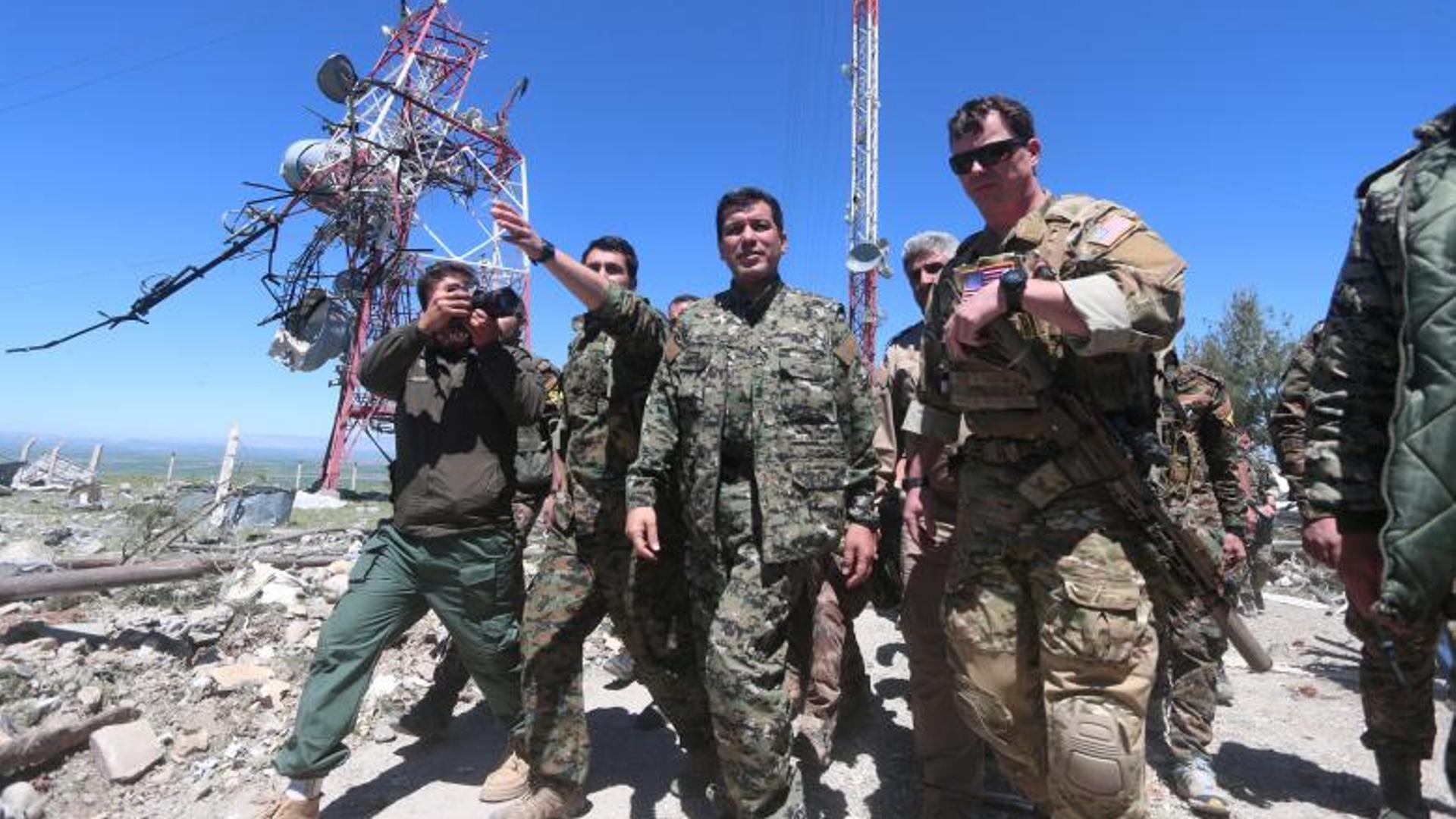Partnering with Turkey’s enemy to defeat Daesh was a politically convenient workaround that has come back to haunt the US.
A peculiar narrative has emerged following US President Donald Trump’s controversial announcement that the US would pull troops out of northeast Syria and allow Turkey to move in.
Pundits and policymakers—including some I worked with, in the previous administration—have cast the decision as a great betrayal of the Kurds and a gift to Russia, Iran, and ISIS (Daesh).
For sure, the initial tweet on Sunday (followed by one the day after promising to obliterate the Turkish economy), was arbitrary and potentially harmful to US national interest. The Pentagon was blindsided by the announcement and did its best to remind the world that it did not “endorse a Turkish operation” in the area.
While concerns regarding the erratic and perhaps harmful nature of the president’s decision are understandable and one that I share, there is a problematic rewriting of the recent history of US involvement in Syria.
Following the rise of Daesh in 2014, the Obama administration scrambled to confront the terror group without committing US ground troops. In Iraq, it supported the Iraqi army and newly-formed Popular Mobilization Forces (PMF).
In Syria, it settled on the Syrian franchise of Marxist-guerrillas know as the YPG – and from the beginning, the decision was problematic. The YPG shares the same command structure and ideology as their Turkish counterparts, the PKK, who were and remain a designated terror group by Turkey and the United States.
In an effort to repackage the group, US Department of Defense officials convinced the YPG to rebrand as the Syrian Democratic Forces (SDF) and to add some Arab elements. We warned that the decision would anger Turkey and weaken NATO when the opposite was needed to confront the Syria crisis, not to mention Russia.
What was needed, instead, was a broader US effort that tackled not only the symptom (Daesh) but also the disease. It was Syrian President Bashar al Assad after all who wrecked the country, released terrorists from jail, and actively avoided targeting Daesh while bombing moderate opposition fighters and civilians.
Partnering with Turkey’s mortal enemy to defeat the symptom was a politically convenient workaround that was sure to come back and haunt us.
Former Obama officials and even Republican lawmakers have decried the recent announcement as a great betrayal of loyal allies. Former UN Ambassador Nikki Haley tweeted that “we must have the backs of our allies” while posting the hashtag #TurkeyIsNotOurFriend. But it was the US decision to support the YPG in the first place that led us to this.
With no appetite to deploy sufficient troops in Syria, the US was always going to fold whenever Turkey decided that it had enough. Neither Democrats nor Republicans have supported the level of troops needed to prevent Daesh from resurrecting or deterring Turkey from moving into the region.
Even today, 400 SDF personnel watch over thousands of Daesh prisoners and their families, many of whom are citizens of Western countries, without any support by those who claim to care for them.
In their defence of a bad policy that has come home to roost, former officials are now arguing that there was never an alternative to working with the YPG. That’s not exactly right.
When Daesh rolled through Syria, it was the moderate opposition that confronted it while simultaneously fighting the regime and its allies. In late 2015 and early 2016, the Free Syria Army (FSA) had around 40,000 fighters in southern Syria and about 35,000 in the north, especially in Aleppo province. In fact, it was the moderate opposition that expelled Daesh from the city, only to be expelled by the regime with help from none other than the YPG.
What the FSA lacked and the YPG ultimately received, was an 80-plus nation coalition, close air-support, and on-the-ground mentoring by Special Operations personnel, which were instrumental in defeating Daesh.
Some point to the now-defunct DoD effort to train-and-equip opposition fighters against Daesh as proof that they had to go with the SDF. But that program was destined to fail because those same officials insisted on requiring recruits to somehow not fight Assad. They also insisted on extreme vetting measures that disqualified thousands simply because they operated in close proximity to extremist or terrorist groups such as al Nusra. Ironically, those same officials enthusiastically embraced the YPG — the affiliate of an actual terrorist group, the PKK.
Reading the Twitter feeds and watching news coverage of the subject, one would think that Turkey is about to occupy all of the areas currently held by the SDF and that all US troops will be leaving. However, Turkey has been clear that it seeks to establish a 30-kilometre buffer zone to keep the SDF away from the border and to potentially repatriate up to 2 of the 3 million Syrians it currently hosts.
Assuming that’s the case (it is highly unlikely that Turkey would go further south and risk entanglement with the Syrian regime and its allies), that leaves the SDF in control of large swaths of territory, including Raqqah.
Rather than waste our energies on attacking a NATO ally that has clearly given up on the United States, we must immediately bolster our support to communities south of the Turkish buffer zone if we truly care about our friends and seek to prevent the empowerment of our adversaries.
Author: Wa’el Alzayat
Wa’el Alzayat was previously senior policy adviser to US Ambassador to the UN Samantha Power. He served as policy expert at the U.S. Department of State from 2007-2017. He is currently CEO of Emgage, a civic education and mobilization organization.
Source










Discussion about this post